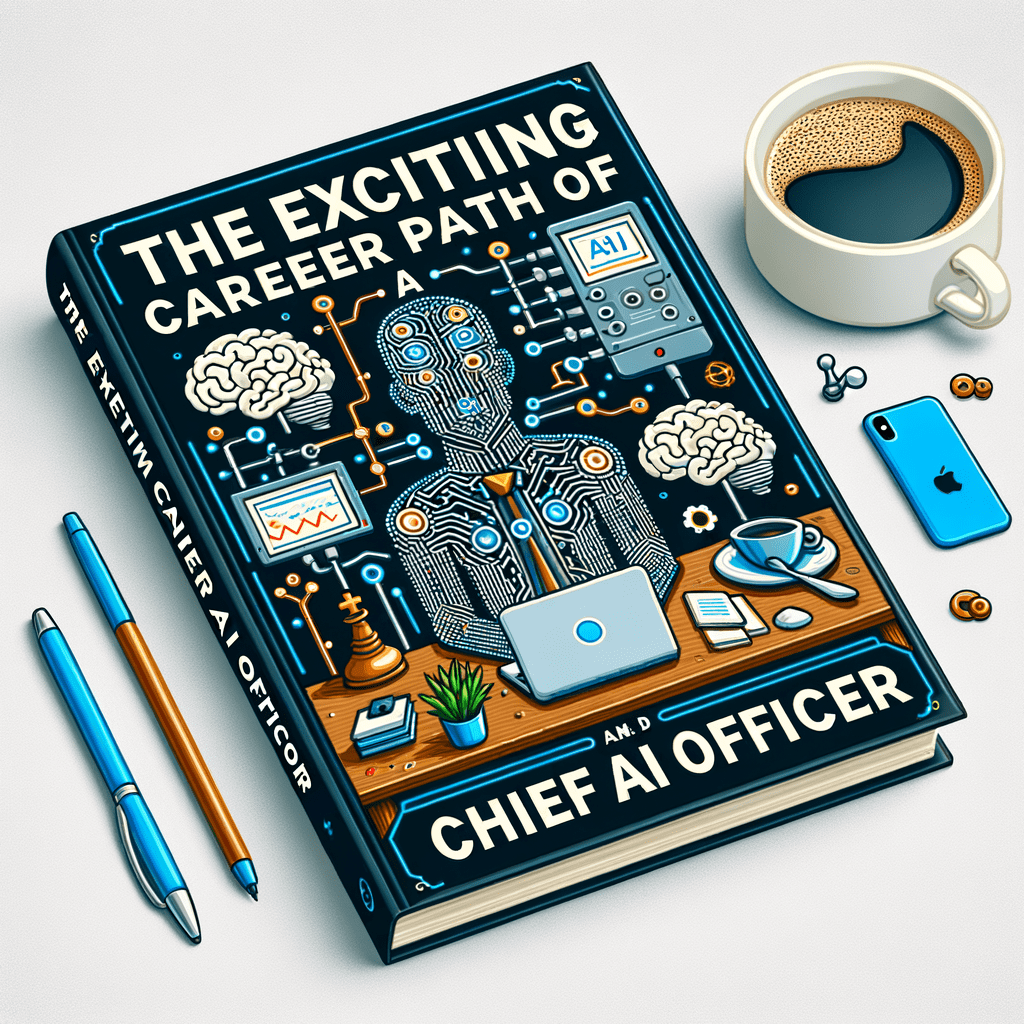The role of Chief AI Officer (CAIO) is rapidly emerging as crucial in today’s business world. This career path is increasingly attractive as artificial intelligence reshapes industries. What does it take to reach this executive leadership position?
Becoming a CAIO combines deep technical expertise and strategic business skills. This path demands a blend of skills exceeding traditional C-suite roles. It requires staying ahead of innovation while handling the ethical and practical challenges of AI.
Let’s explore what this career path involves and how to succeed in this cutting-edge role. A successful candidate will have extensive experience and proven track record of strong technical leadership. CAIO candidates ideally work closely with data scientists and other technical experts in AI applications and should be able to allocating resources to ensure successful business operations.
The Foundation: Building Technical Expertise
A successful Chief Artificial Intelligence Officer career begins with a solid technical foundation. This typically includes a background in computer science, data science, or engineering. Many CAIOs hold advanced degrees, sometimes even PhDs, in AI-related disciplines.
Practical experience developing and implementing artificial intelligence officer solutions is essential. Examples include machine learning projects, natural language processing systems, creating AI algorithms, and managing data science teams.
Understanding how AI integrates with broader technology is also important. This encompasses cloud computing, big data, Internet of Things (IoT), and cybersecurity principles.
Staying current with the latest AI advancements is important throughout a CAIO’s career path. This rapidly changing field requires continuous learning of the latest ai technologies and generative ai, ensuring the CAIO stays at the forefront of artificial intelligence officer innovation.
Developing Business Acumen
Technical skills are only one part of being a successful AI leader. The CAIO role requires business skills, connecting AI abilities with company objectives. A potential impact on the organization’s ai projects could result in valuable insights and drive business.
This involves strategic planning, financial management, and project management. Change management, risk assessment, and risk mitigation are also important.
Many aspiring CAIOs obtain an MBA or business education. This helps in understanding AI’s business value and aligning initiatives with the company’s overall ai strategy.
Gaining Cross-Functional Experience
A Chief AI Officer’s career often includes working in various departments. This diverse experience provides insight into how AI applications can be applied across different situations and business goals.
Key areas include product development, customer service, and operations. Experience in marketing, sales, and human resources is also helpful.
This varied experience allows for a broad perspective on AI’s business transformation potential. It helps when explaining AI concepts to those without a technical background, which is important for any CAIO.
Leadership and Communication Skills
Leadership becomes more important as one progresses in their Artificial Intelligence Officer career. CAIOs lead diverse, specialized teams. They ensure ethical standards are maintained while leading artificial intelligence officer efforts.
Important leadership qualities include setting a vision and strategic thinking. Team building, motivation, and conflict resolution skills are vital.
Communication is especially critical for CAIOs. They must explain complex AI technologies to executives and board members. These leaders help drive business with the insights given.
Ethical Considerations and Governance
Understanding AI ethics and governance is essential for a Chief AI Officer. Privacy, bias, and societal impact concerns rise with AI’s increasing use.
CAIOs must know AI ethics frameworks, data privacy regulations, and responsible AI practices. Detecting and mitigating bias in AI systems is key to responsible ai applications.
This knowledge builds trust with customers and the public. It ensures ethical AI usage aligned with societal values, thus protecting an organization from potential breaches of their privacy policy.
Networking and Industry Involvement
The AI field thrives on collaboration. Networking is vital for any Chief AI Officer’s career. A strong technical leader develops ai concepts with proven track and proven track record.
This can include AI conferences, industry associations, and open-source projects. Publishing research and thought leadership builds a stronger network.
These activities inform and increase one’s standing in the AI community. They can create partnerships and job opportunities. CAIOs also often participate in thought leadership related to ai ethics.
The Path to CAIO: Typical Career Progression
A typical CAIO career begins with technical roles like AI Engineer or Data Scientist. It involves overseeing ai projects, internal ai resources, and latest ai developments.
Progression then moves to team lead, project manager, or AI director roles. A Vice President of AI or similar position usually follows.
Finally, one steps into the Chief AI Officer role. This journey typically requires 10–15 years, but it varies. Those pursuing this leadership role need deep understanding of ai algorithms, especially those involved in natural language and language processing. They will then use these technologies and ai benefits for drive business objectives.
The CAIO Role: What to Expect
The CAIO role varies but typically includes setting the company’s AI strategy and overseeing research. It also involves identifying AI uses across the business.
Managing talent, ensuring ethical AI use, and collaboration with executives are other aspects. This position integrates strategy, technology, and leadership to develop ai, and ultimately leveraging ai in various departments across an organization.
As artificial intelligence continues to reshape the business world, the CAIO role grows in importance. This executive is responsible for aligning ai initiatives and ensuring ai projects meet their full transformative potential. It requires a proven track and extensive experience with complex ai problems.
Compensation and Job Outlook
A Chief AI Officer career can be lucrative. According to Glassdoor, the average total compensation for CAIOs in the United States is $380,486. Base pay is between $128,000 and $240,000 with additional compensation ranging from $156,969 to $293,008.
This compares with other tech C-suite positions, like Chief Technology Officer, which averages $276,000 total. As artificial intelligence technologies advance, so does the need for individuals with deep understanding of these complex systems.
Demand for AI leaders is high. Many companies have or are seeking to fill this position. This suggests a bright outlook for those working toward a CAIO role.
Challenges and Opportunities
The CAIO career path is challenging and requires adapting to a changing field and delivering results from substantial AI investments. This can put pressure on even the most skilled AI leaders.
However, CAIOs can shape their companies and industries. They drive change at the forefront of innovation by integrating ai technologies in creative new ways to increase productivity.
AI has a far-reaching influence across many areas and sectors, impacting work hours in all industries. CAIOs will significantly influence the future of work and business as AI technologies develop. GE Healthcare uses these ai algorithms to provide data analytics which gives valuable insights into patient care.
FAQs about Career path for a Chief AI Officer
What educational background is best for becoming a CAIO?
A background in computer science, data science, or a similar area is important. Many CAIOs have advanced degrees, often PhDs, in AI. Combining technical education with an MBA can be extremely beneficial.
How long does it typically take to become a CAIO?
The typical CAIO career path takes 10–15 years. This includes advancing from technical roles to leadership positions. However, time may vary based on personal success and organizational needs. The time frame will change based on how the organization structures their internal ai leadership positions. Someone already within an internal ai team, who develops ai for internal use cases may advance their career faster than an external hire.
What skills are most important for a CAIO?
CAIOs require technical expertise, business skills, and leadership skills. They must understand AI ethics and communicate complex technical ideas. Strong technical skills should come with proven track of integrating ai and aligning ai to strategic direction, driving significant positive impacts and overall organization’s ai transformation.
How does the salary of a CAIO compare to other C-suite roles?
CAIO salaries compare with similar C-suite roles. Glassdoor says average total CAIO compensation is $380,486. This is comparable to a Chief Technology Officer, indicating this is a senior leadership positions and comes with commensurate pay. The ideal caio candidate should possess a proven track of successfully aligning ai efforts to organizational business goals, and a proven track record of driving adoption of ai across an organization.
Conclusion: The Future of Chief AI Officers
The Chief AI Officer career path is challenging but rewarding. It requires technical skills, business acumen, leadership qualities, and ethical understanding. As artificial intelligence officer transforms industries, the CAIO’s role grows.
This career involves constant learning, varied experiences, and responsible AI development. It gives you a chance to shape business and technology’s future through ai projects that are developed from start to finish using proven software development and project management skills, taking data analytics, including those using natural language and language processing and making sure it meets organizational needs.
The path to CAIO may be challenging, but the personal and professional rewards are great. As AI becomes essential to business, those leading its initiatives will be highly valued.
This career is about being at the forefront of world-changing technology. It is a bright future for those with the passion, skills, and vision to pursue it.



